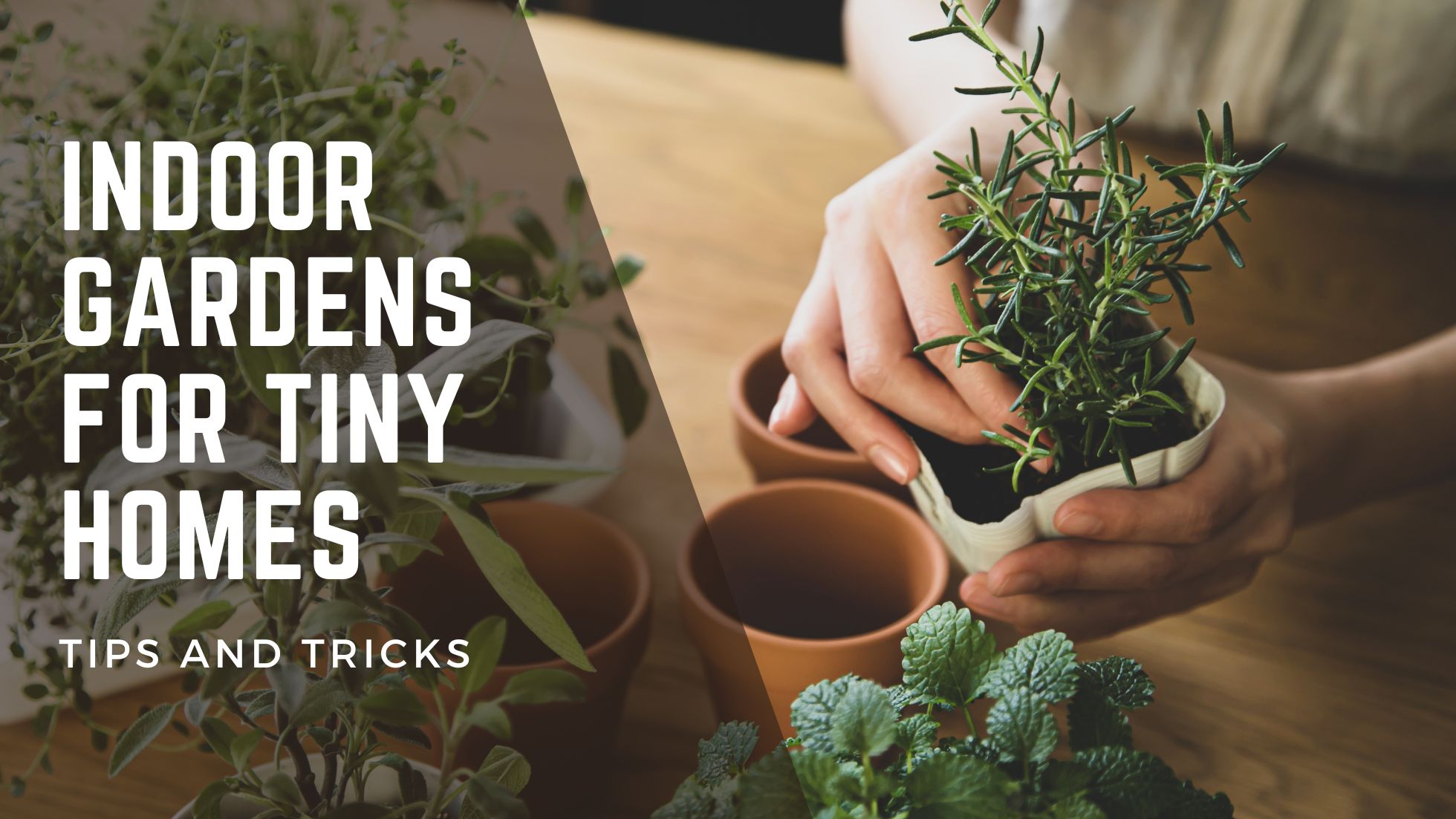Creating an indoor garden in a tiny home is a wonderful way to bring nature indoors. Here’s how you can set up a thriving indoor garden in your compact living area:
Benefits of Gardening in Small Spaces
- Enhanced Well-being: Plants improve air quality, reduce stress, and provide a calming environment.
- Fresh Harvest: Growing herbs and vegetables offers fresh, homegrown food options.
- Aesthetic Appeal: Even a small garden enhances the visual appeal of compact living areas.
- Cost-Effective: Reduces grocery bills and minimizes the expense of indoor decoration.
Choosing the Right Plants
- Succulents: Hardy and low-maintenance. Ideal varieties include Haworthia, String of Pearls, Jade Plants, and Echeveria.
- Herbs: Perfect for cooking enthusiasts. Try basil, mint, and parsley.
- Trailing Plants: Pothos, ivy, and philodendron are excellent for vertical growth.
- Air Plants: No soil needed, ideal for small spaces.
Selecting the Right Containers
- Vertical Planters: Use walls or ceilings with pocket planters, macrame hangers, and vertical garden kits.
- Hanging Planters: Save floor space with woven baskets, ceramic pots, or glass orbs.
- Window Boxes: Utilize sunny windowsills with narrow containers.
- Small Containers: Use tiny pots for succulents and small plants, matching your decor.
Maximizing Light and Space
- Low-Light Plants: Snake plants, pothos, and peace lilies thrive in less light.
- Grow Lights: Supplement natural light with energy-efficient LED grow lights.
- Reflective Surfaces: Mirrors or shiny tiles can increase light availability.
- Vertical Space: Utilize shelves and wall-mounted planters to save space.
- Pruning: Regular pruning keeps plants manageable and ensures even light distribution.
Vertical Gardening Techniques
- Living Walls: Create a vertical garden with support structures, felt layers, and irrigation systems. Use climbing plants like ivy and cascading ones like petunias.
- Hanging Baskets: Perfect for ferns, spider plants, and trailing succulents. Hang them from ceilings, walls, or shelves.
- Vertical Plant Stands: Showcase potted plants in a step-like or spiral design.
Utilizing Indoor Spaces
- Room-Specific Placement: South-facing windows are great for sun-loving plants, shady bathrooms for ferns, and kitchen windowsills for herbs.
- Creative Wall and Ceiling Use: Install shelves hanging planters, and use vertical space effectively.
- Decor Integration: Large plants like monstera can serve as living art, while snake plants add a modern accent.
Innovative Container Gardening
- Unique Containers: Use vintage suitcases, old wheelbarrows, or stack pots for a cascading effect.
- Portable Options: Containers can be moved for optimal sunlight exposure.
- Seasonal Flexibility: Plan for year-round gardening with appropriate containers.
Growing Edible Indoor Plants
- Herbs: Basil, parsley, mint, and chives are easy to grow and useful in the kitchen.
- Microgreens: Radish, kale, and other microgreens sprout quickly and are nutrient-rich.
- Dwarf Fruit Trees: Try growing small varieties of lemons or figs indoors.
Incorporating Hydroponic Systems
- Space-Efficient Hydroponics: Ideal for vertical growth and water conservation.
- Beginner-Friendly Kits: Many systems come with easy-to-follow instructions.
Maintaining a Tiny Garden
- Watering: Employ self-watering systems or drip irrigation to maintain optimal soil moisture levels.
- Fertilizing: Use balanced, water-soluble fertilizers and organic compost to ensure plants get essential nutrients.
- Pest Control: Inspect plants regularly for pests like aphids and spider mites. Use natural remedies like neem oil or insecticidal soap.
- Pruning and Cleaning: Regularly prune plants and clean leaves to remove dust.
- Light Management: Place plants near windows or use grow lights to ensure adequate light. Rotate pots to ensure even light distribution.
Maximizing Balcony or Patio Spaces
- Multi-Functional Furniture: Benches with built-in planters maximize space.
- Hanging Baskets and Wall Planters: Utilize vertical space for herbs and flowers.
- Tiered Plant Stands: Display a variety of plants in a compact area.
- Water Features: Small fountains can create a calming atmosphere.
You can create a beautiful and functional indoor garden in even the tiniest of homes by choosing the right plants, containers, and light sources and following the above maintenance tips. Living in a tiny home doesn’t mean giving up on the joys of gardening. Embrace the creativity and joy that come with tiny home gardening, and you’ll find that a small space can offer great rewards. Happy gardening!
